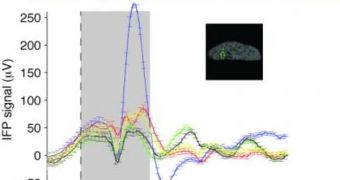The human brain is the most effective recognition machine in the world, easily outclassing all other animal species, and even computers. The mind can handle discrepancies in size, color, orientation, lighting conditions and other factors with tremendous ease, and can recognize an object within less than a second after seeing it without difficulty. However, the mechanisms it employs in doing this have remained a mystery for researchers, despite ample studies on the matter. A new investigation, led by Children's Hospital Boston experts, shows that one of the techniques the brain employs is to try and identify objects, people, faces and habits, at a very early processing stage.
In a new scientific paper, published in the April 30th issue of the journal Neuron, the team detail the results of the research they have conducted on children about to undergo surgery for epilepsy. They took advantage of the situation, and mapped the youngsters' brains with the help of electrodes, which were placed directly on their organs. Results revealed the fact that it was a great deal of chatter in the brain that allowed for their visual perception to be as high and effective as it was.
When we see an object, light entering the eye and falling on the retina inside gets converted into electrical impulses, which then flow to the brain via the optic nerve. However, before reaching the temporal lobe, which is ultimately responsible for perception, vision, and the integration of the two, the data needs to pass through a hierarchy of visual areas, which constantly send signals back to previous processing “stages.” These interactions are, researchers believe, the reason why our visual perception is so strong and reliable. Naturally, they say, this must have been formed after millions of years of evolution.
“What hasn't been entirely clear is the relative contribution of these 'feed-forward' and 'feed-back' signals. Some people think that if you don't have feedback, you don't have vision. But we've shown that there is an initial wave of activity that gives a quick initial impression that's already very powerful,” the senior investigator of the Neuron study, Gabriel Kreiman, PhD, who is working from the Children's Hospital Boston Department of Ophthalmology, explains.
Amazingly, the researchers share that some object categories are very easily recognized by the brain, and that it only takes a very tiny amount of time for the mind to determine what they are, and if they are familiar. The experts tell that the reaction is so precise and well-determined, that they could use mathematical models to determine what objects the subject was looking at solely based on the neural activation patterns they recorded.

 14 DAY TRIAL //
14 DAY TRIAL //